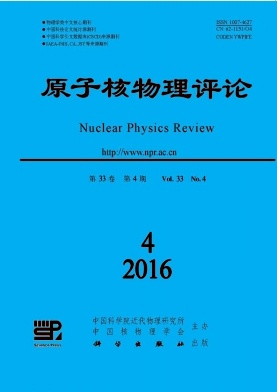|
[1]
|
SIEMEN P J, JENSEN A S. Elements of nuclei:many-body physics with the strong interaction[M]. Addison Wesley Publishing Company, 1987. |
|
[2]
|
HASSE R W, MYERS W D. Geometrical relationships of macroscopic nuclear physics[M]. Springer Science & Business Media, 2012. |
|
[3]
|
HOFMANN H. Phys Rep, 1997, 284(4):137. |
|
[4]
|
BOILLEY D, SURAUD E, YASUHISA A, et al. Nucl Phys A, 1993, 556(1):67. |
|
[5]
|
BOILLEY D, ABE Y, AYIK S, et al. Z Phys A, 1994, 349(2):119. |
|
[6]
|
ABE Y, AYIK S, REINHARD P G, et al. Phys Rep, 1996, 275(2):49. |
|
[7]
|
KOLOMIETZ V M, RADIONOV S V, SHLOMO S. Phys Rev C, 2001, 64(5):054302. |
|
[8]
|
RADIONOV S, ÅBERG S. Phys Rev C, 2005, 71(6):064304. |
|
[9]
|
GRABERT H, SCHRAMM P, INGOLD G L. Phys Rev Lett, 1987, 58(13):1285. |
|
[10]
|
WEISS U. Quantum dissipative systems[M]. Singapore:World scienti c, 1999. |
|
[11]
|
MAYGER A, POTTIER N. Phys Rev E, 2002, 65(5):056107. |
|
[12]
|
POTTIER N. Physica A, 2003, 317(3):371. |
|
[13]
|
BAO J D. Nucl Phys Rev, 2006, 23(4):413. (in Chinese) (包景东. 原子核物理评论, 2006, 22(4):413.) |
|
[14]
|
BAO J D, ZHUO Y X, WU X Z. High Energy Physics and Nuclear Physics, 1993, 17(4):362. (in Chinese) (包景东,卓益忠,吴锡真. 高能物理与核物理, 1993, 17(4):362.) |
|
[15]
|
BANERJEE D, BAG B C, BANIK S K, et al. Phys Rev E, 2002, 65(2):021109. |
|
[16]
|
BANIK S K, BAG B C, RAY D S. Phys Rev E, 2002, 65(5):051106. |
|
[17]
|
BARIK D, BAG B C, Ray D S. J Chem Phys, 2003, 119(24):12973. |
|
[18]
|
BANERJEE D, BAG B C, BANIK S K, et al. J Chem Phys., 2004, 120(19):8960. |
|
[19]
|
GARC IA-OJALVO J, SANCHO J M, RAMIREZ-PISCINA L. Phys Rev A, 1992, 46(8):4670. |
|
[20]
|
ABE Y, BOILLEY D, GIRAUD B G, et al. Phys Rev E, 2000, 61(2):1125; BOILLEY D, ABE Y, BAO J D. Eur Phys J A, 2003, 18(4):627. |
|
[21]
|
BAO J D. J Chem Phys, 2006, 124(11):114103. |
|
[22]
|
BAO J D. Nucl Phys Rev, 2005, 22(4):370. (in Chinese) (包景东. 原子核物理评论, 2005, 22(4):370.) |
|
[23]
|
BAO J D, ZHUO Y Z. Phys Rev C, 2003, 67(6):064606. |
|
[24]
|
BAO J D, JIA Y. J Stat Phys, 2006, 123(4):861. |
|
[25]
|
BAO J D, JIA Y. Phys Rev C, 2004, 69(2):027602. |
|
[26]
|
JIA Y, BAO J D. Nucl Phys Rev, 2004, 21(4):385. (in Chinese) (贾莹,包景东. 原子核物理评论, 2004, 21(4):385.) |
|
[27]
|
ARRAY AS M, KAUFMAN I KH, LUCHINSKY D G, et al. Phys Rev Lett, 2000, 84(12):2556 |
|
[28]
|
POLLAK E. J Chem Phys, 1986, 85(2):865. |
|
[29]
|
POLLAK E, GRABERT H, HÄnggi P. J Chem Phys, 1989, 91(7):4073. Heavy-ion |






 甘公网安备 62010202000723号
甘公网安备 62010202000723号 DownLoad:
DownLoad: